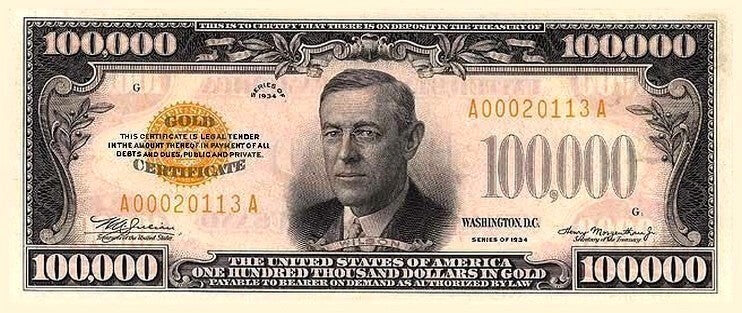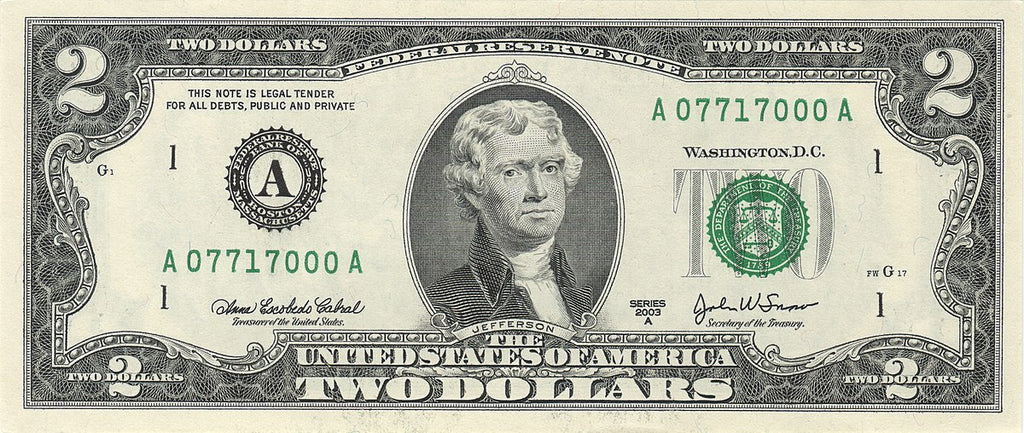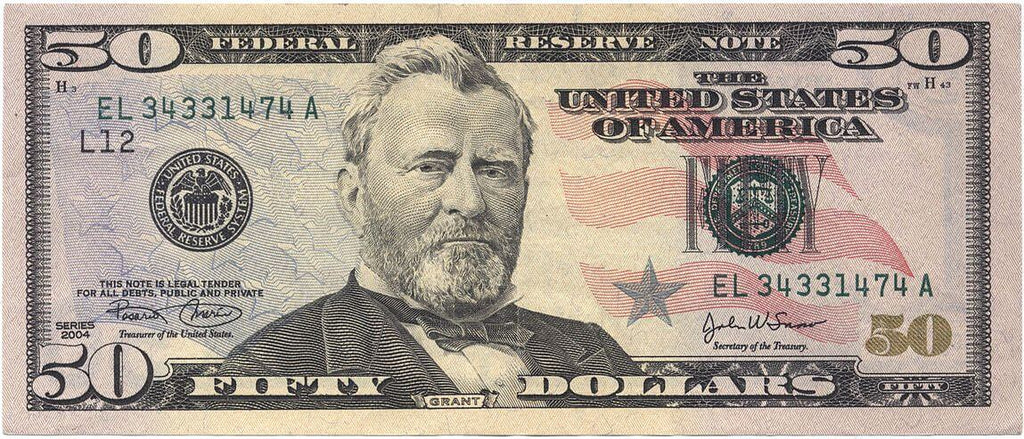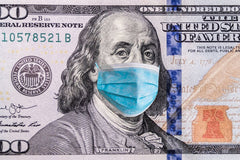Your cart is currently empty.
Free ($50 value) Laptop Stand on Orders Over $1,000
Free shipping on orders over $50

- Feb, 10 , 21
- 0 comments
US Dollar Bill Faces
Contents
- Faces on US Coins
- What Presidents are on Money?
- Who is on the 1 Dollar Bill?
- Who is on the 2 Dollar Bill?
- Who is on the 5 Dollar Bill?
- Who is on the 10 Dollar Bill?
- Who is on the 20 Dollar Bill?
- Who is on the 50 Dollar Bill?
- $100 Bill President
- Who is on the $500 Bill?
- Who is on the $1000 Bill?
- Faces on $5000, $10,000, and $100,000 Bills
- Conclusion
Dollar bills are arguably the most recognized currency the world over. They are known by their green hue and the faces of past presidents on bills. All seven faces found individually on the principal denominations of dollar bills represent men who occupy an influential position in America’s history. They include five presidents and two founding fathers. There is no correlation between the faces and the denominations that they appear on. There are other, more subtle, ways to differentiate and detect denominations.
To enhance cash management effectiveness, consider a top bill counting machine. This device will help you save valuable time and reduce the likelihood of errors in financial transactions.
Faces on US Coins
United States coins - the penny, dime, nickel, and quarter - are all adorned with faces of past presidents. Here is a closer look at the faces featured on US coins:
Penny
The penny was introduced and issued on the birth centennial of President Abraham Lincoln in 1909. This was the first US coin that featured a portrait of the President of the United States and the motto “In God We Trust” that has become synonymous with US currency. Interestingly, the portrait of Lincoln is the only one on a coin that faces to the right, although there is no reason for this anomaly.

Nickel
The nickel with Thomas Jefferson’s face on it was issued in 1938 as a result of a competition held by the US Mint. The new Jefferson Nickel replaced the Buffalo Nickel and continues to be one of the most popular coins in circulation. Jefferson’s portrait is also encircled by “In God We Trust”, along with the word “Liberty”. The reverse side of the coin depicts Jefferson’s Monticello plantation and the words “United States of America”, “Monticello” and “E Pluribus Unum”.

Dime
Franklin D Roosevelt passed away in 1945 and the preceding year saw the securing and minting of the Roosevelt dime, replacing the Mercury dime which had been in circulation since 1916. Roosevelt’s dime was created to celebrate his fight against polio. His portrait has the words “Liberty” and “In God We Trust” on either side of it. The focal point of the back of the coin is a freedom torch encircled by oak and olive branches, which are symbols for victory and peace, respectively. The phrase "E Pluribus Unum” can be seen in the background.

Quarter
Minted in 1932, the George Washington quarter was created to celebrate the 200th birthday of America’s first president. Initially, it was meant to be a Washington half dollar that would temporarily replace the Walking Liberty half dollar. However, these plans were ultimately thrown out and it was decided that the Washington Quarter would permanently replace the Standing Liberty quarter. The value sits below Washington’s portrait, which is surrounded by the words “In God We Trust” and “Liberty”. The back of the coin features the America the Beautiful Quarters series, introduced in 1999 to celebrate National Park and Historic Monument sites in each of the 50 states and US jurisdictions.

50 Cent Coin
So, who is on the 50 cent coin? The 50 cent coin, also known as the half dollar coin, currently has a portrait of President John F. Kennedy on it. This Kennedy theme was first introduced in 1964, a year after his assassination. The first half dollar was created in 1794 and has seen a variety of different figures including Lady Liberty and Benjamin Franklin. Since its inception, the half dollar coin has been made of silver. However, this lasted until 1971 when the Mint changed its composition to copper-nickel.

Dollar Coin
The Sacagawea dollar coin was designed by Glenna Goodacre and entered into circulation in 2000. It depicts Sacagawea carrying her infant son on her back. The reverse side of the coin is the image of an American bald eagle flying.

What Presidents are on Money?
Who is on the 1 Dollar Bill?
George Washington’s recognizable portrait can be found on the 1 dollar bill. It first appeared in 1869 replacing the Secretary of the Treasury Salmon P. Chase who had been on the Legal Tender Note. The first $1 Federal Reserve Notes were issued in 1963 with Washington’s portrait remaining. The reverse side of the note includes the Great Seal. The design remains unchanged and will continue to do so under the Financial Services and General Government Appropriations Act, which forbids redesigning the bill. The bill is also very rarely counterfeited, contributing to the longevity of its design.

Who is on the 2 Dollar Bill?
First issued in 1862, the $2 bill initially featured a portrait of Alexander Hamilton. In 1869, Hamilton’s portrait was replaced by Thomas Jefferson and remains on the bill to this day. Like the nickel, the reverse side of the bill also featured Jefferson’s Monticello home. However, it was later replaced by John Trumbull’s “Declaration of Independence” painting which celebrated the United States’ bicentennial.

Who is on the 5 Dollar Bill?
Seven other men’s portraits were featured on the $5 bill before an image of Abraham Lincoln was introduced in 1914. Past portraits included Alexander Hamilton. From 1914 - 1929 the reverse image was Christopher Columbus. Since 1929 the Lincoln Memorial has been on the reverse side. The bill underwent a major redesign in 2008 including the introduction of purple, an embossed Great Seal of the United States to the right of Lincoln’s face, and a belt of stars. Improved security features include a visible, purple “5” found at the bottom right-hand corner. There are also numerous yellow “5s” found at the top right of the bill.

Who is on the 10 Dollar Bill?
Initially, the first $10 bill issued in 1914 had President Andrew Jackson on it. He later moved to the $20 bill in 1929 and was replaced by Alexander Hamilton. Hamilton was America’s first Treasury Secretary and is only one of two non-presidents found on US paper currency. The other non-president is Benjamin Franklin. The reverse side of the bill is a picture of the US Treasury Building. The $10 bill has also seen the introduction of technologies that make it harder to counterfeit notes, however, its greatest change was announced in 2015 when it was decided that a woman would replace Hamilton in 2020. However, due to the worldwide phenomenon that Hamilton the musical became, the government decided to keep him on the bill.

Who is on the 20 Dollar Bill?
First issued in 1914, the bill first had President Grover Cleveland's face on it and was later replaced by Andrew Jackson in 1929. The bill was also decreased in size. The reverse side of the bill shows the White House and has remained largely unchanged. Increased security features were added in 1990, 1998, and 2003. Abolitionist and political activist Harriet Tubman was chosen to replace Jackson in 2020, but this has been postponed until 2028 due to security concerns. Tubman will be the first African American to appear on US currency.

Who is on the 50 Dollar Bill?
Ulysses S. Grant appeared on the face of the $50 bill in 1914. Grant played a pivotal role in helping the United States recover from the Civil War and served two terms as president. Initially, the reverse side of the bill was a picture of Panama, a battleship, and a merchant. This was later replaced by an image of the US Capitol. The bill has seen security upgrades in 1990, 1997, and 2004. This included the addition of microprinted words and red and blue colors on either side of the bill. A watermark of the American flag has also been added to the right of Grant

$100 Bill President
Founding Father Benjamin Franklin has had his face featured on the $100 bill since it was originally issued in 1914. The note underwent a significant redesign in 2009, where Franklin’s portrait was placed next to the Declaration of Independence, an inkwell and a quill pen. New anti-counterfeiting technologies such as black-light technology and holographic watermarks were also introduced. The reverse side of the bill features Independence Hall in Philadelphia. It is the first time that a building outside of Washington DC has been shown on any denomination.

Who is on the $500 Bill?
Known as the “rainbow note”, the $500 bill has featured a host of notable men including John Quincy Adams and US Supreme Court Chief Justice John Marshall, who first appeared on the bill in 1918. William McKinley featured on the bill from 1928 to 1934. The bill was discontinued in 1969 by the US Fed and Treasury due to lack of use. This bill was last printed in 1945, but it is believed that the bills are still in the possession of some citizens. McKinley is a notable face as he was one of only four presidents to be assassinated. He was shot in 1901.

Who is on the $1000 Bill?
Grover Cleveland’s face is on this high denomination bill that was initially issued in 1861 to help finance the Civil War. The bill was discontinued in 1969 and was last printed in 1945. Like the $500 bill, some Americans continue to have this discontinued bill in their possession.

Faces on $5000, $10,000, and $100,000 Bills
These bills have all been taken out of circulation, however, they all featured notable faces. James Madison appeared on the $5000 bill in 1878 and after the redesign in 1918, which showed George Washington on the reverse side. Andrew Jackson was featured on the $10,000 bill with an eagle, an American flag, and a shield on the reverse side. Many do not know of its existence, but a $100,000 bill does exist. It bears the portrait of Woodrow Wilson and is known as a “gold certificate”; it was never introduced to the general public, only used by Federal Reserve Banks. They are not viewed as legal tender outside of Fed transactions and can fetch upwards of $1 million.

Conclusion
Faces on money are an intrinsic part of American currency. They, along with the other images depicted alongside them, showcase America’s rich and varied history and the people that have contributed to these histories. As America continues to grow and evolve as a nation, her currency will also change to reflect this.
Search
Custom Menu
Recent Post
Archive
- April 2022
- September 2021
- July 2021
- February 2021
- December 2020
- September 2020




